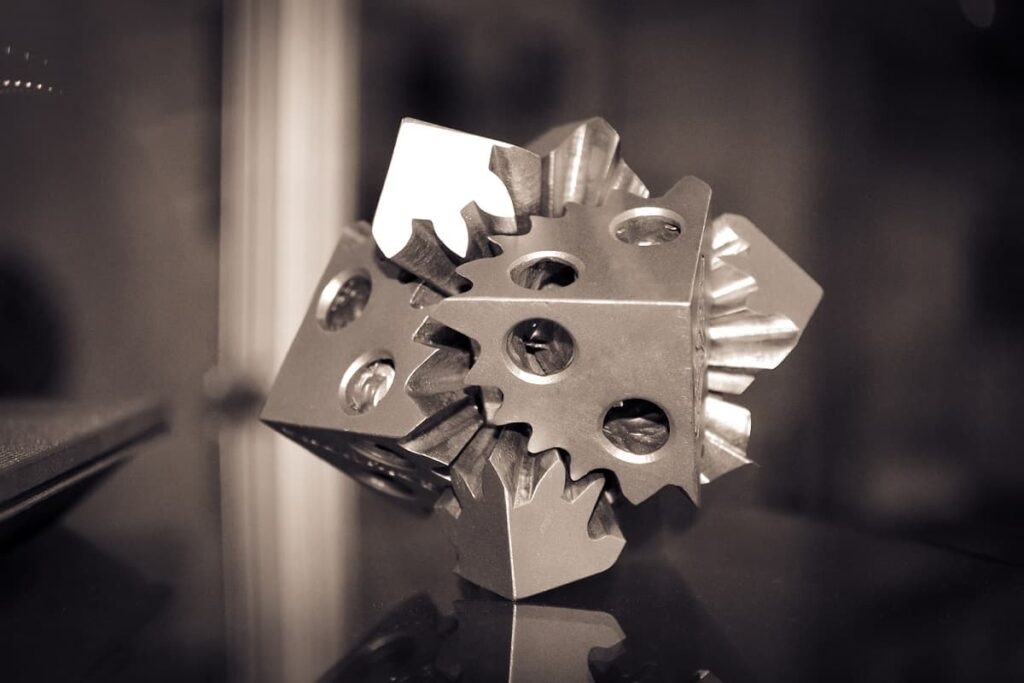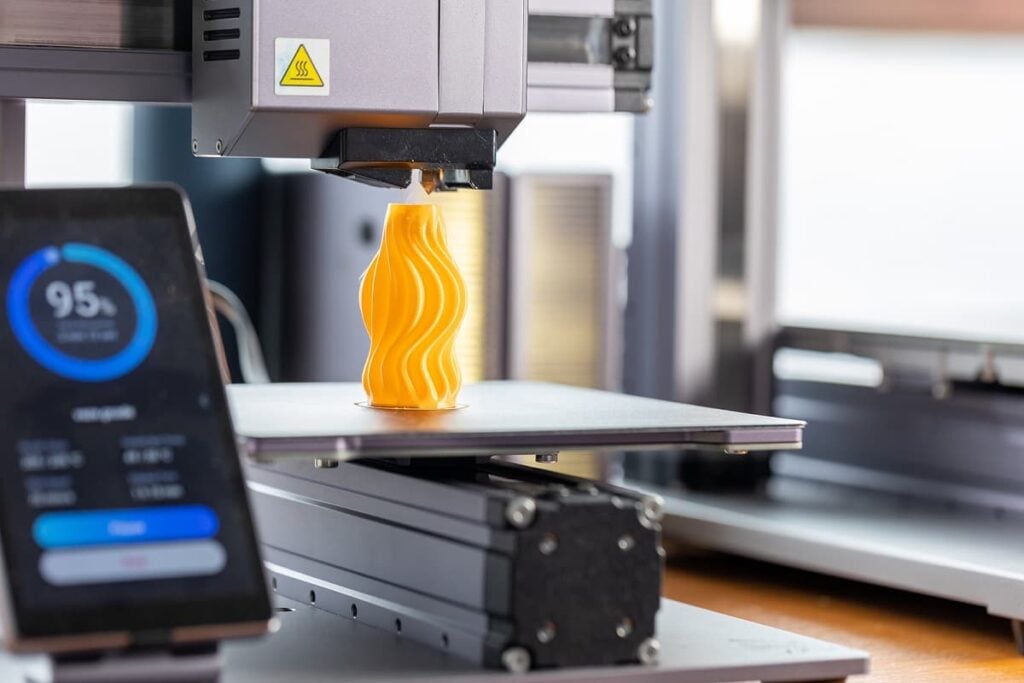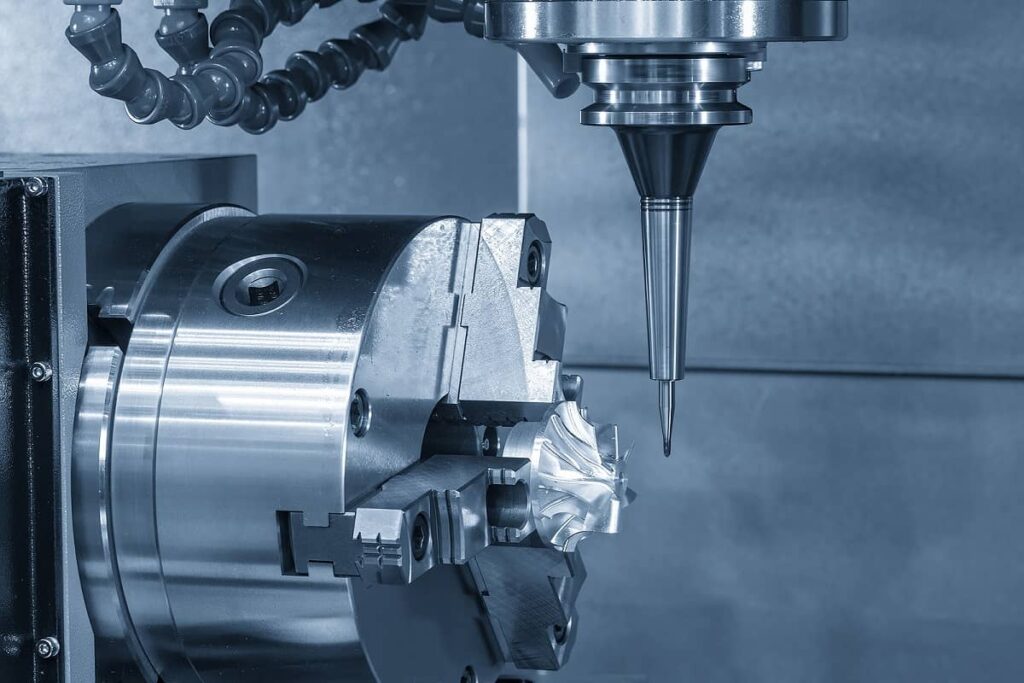Protolabs Stock: Where’s the Revenue Growth?
Table of contents

Our recent piece on water IoT stock Xylem (XYL) looked at the wide differences in which the finance community defines a growth stock. Usually, this involves looking at earnings growth which doesn’t work so well for disruptive growth stocks which typically don’t have positive earnings. That’s why revenue growth becomes such an important metric for disruptive tech stocks. It’s a proxy for how fast market share is being captured. In the same manner, a disruptive tech firm that stops growing is no longer disrupting. It’s merely existing, and that’s what Protolabs stock (PRLB) seems to be doing these days.
The Rona card has already been played, and now it’s time to get back to growth. We’ll check in a year from now to see if that growth has resumed.
Nanalyze on Protolabs, April 2021
Protolabs’ Revenue Growth
In looking at Xylem, we noted how changing time frames can produce dramatically different compound annual growth rates (CAGRs). Professional investors do this all the time to sugarcoat their performance numbers, and it’s something we refuse to do when considering our own tech stock portfolio performance. Protolabs has grown revenues over the past decade at a 14% CAGR which is respectable by any measure.

But that might be putting too much emphasis on the glory days. A more recent look at revenue growth paints a different picture. Over the past five years, revenue has grown at a more reasonable CAGR of 7%, while the past four years revenue growth hasn’t even managed to keep up with inflation, coming in at a dismal 2% CAGR. Looking at quarterly numbers we see a mediocre attempt at trying to establish consistent revenue growth. Looks like 3D printing isn’t the windfall manufacturing method we had hoped for.

Here’s something odd. With the dismal growth on display above, investors would expect management has lit a fire under everyone’s ass about the need to start growing. That hardly seems the case, and even the top end of their most recent guidance is uninspiring. The latest earnings call offers up platitudes like this which make us question internal priorities.
Thank you to the green team, the Diversity, Equity and Inclusion Leadership Council, Proto Givers and many others for your continued efforts. You’re truly inspirational.
President and Chief Executive Officer Protolabs, Q2-2022 Earnings Call
How about inspiring investors with some revenue growth?
If we use the midpoint for Q3-2022 guidance of $125 million and expect the same in Q4-2022, that would put Protolabs’ 2022 revenues at $508 million, or year-over-year growth of about 4.3%. That would bring their five-year CAGR to around 3% meaning the company can’t even outpace global inflation. Perhaps most concerning is the lack of concern exhibited in the most recent conference call where not one analyst asked whether the company is on track to achieve $1 billion in revenues by 2026, but focused instead on questions relating to next quarter’s guidance. The ability for this company to achieve $1 billion in revenues by 2026 is critically important to our investment thesis, something we noted in last year’s piece on Protolabs Stock vs. Xometry Stock. And the Winner Is?
We had long thought that Protolabs’ closed-loop business model would allow them to control quality and the flow of big data such that they would retain their leadership in distributed manufacturing. They’ve always been the largest firm by size and revenues compared to competitors like Xometry (XMTR). Lately, the gap has been closing as Xometry grows at a consistently faster pace than Protolabs over time. Below you can see how Xometry has rapidly closed in (we’re using the lower end of Q3-2022 guidance for both firms).

3D Hubs is expected to play a big part in helping drive revenue growth, so that’s an important metric to watch for Protolabs. The latest filings provide some 3D Hubs revenue contribution numbers to help us see how growth is happening over time (values we estimated are in green):

Compare the above numbers from 3D Hubs to their direct competitor Xometry and the situation becomes even more concerning.
While revenue growth is paramount for disruptive tech companies, there’s another concern that arises in today’s bear market – survivability.
Protolabs’ Survivability
Lately, we’ve been looking at survivability alongside revenue growth. Gross margins tell us how profitable a business might be when overhead gets trimmed (ideally, starting with all the divisive DEI charlatans) while cash-on-hand provides a simple measure of runway – the amount of time a company might survive before having to raise money by issuing equity (diluting existing shareholders) or raising debt. With 2021 gross margins of 46%, Protolabs is reasonably profitable for a services business and even bests Xometry’s 2021 gross margin of 26% (seems rather low for a software company). One concern can be seen in the below chart which shows the steady decline in earnings for Protolabs over time:

The above would be acceptable if accompanied by strong revenue growth. Instead, investors are presented with shrinking profitability and marginal revenue growth.
Steadily declining profitability means the $110 million in cash and investments Protolabs has on their books might start to erode. That’s not a very big war chest, and now is not the time to be raising money through issuing equity which trades at rock bottom prices. Issuing debt is an option, but at that point, we’d be looking at a company that not only can’t offer revenue growth, but also has lost its appeal as a profitable business that might prove resilient in the face of today’s bear market.
Selling Protolabs Stock
Now that times are getting tight, more firms will turn to distributed manufacturing to make their supply chains leaner. Xometry’s business model allows for a single company to utilize multiple manufacturing providers who may have varying degrees of capacity and capabilities at any given time. That solution poses more flexibility than the rigid capabilities of a company that performs most of the work in-house. In their latest earnings call, Protolabs talked about how their inability to scale led to large backlog in the pandemic times which seems to have impacted customer satisfaction (our emphasis in bold).
Furthermore, the unprecedented surge of orders in 2021 led to record high backlogs for us. These extended lead times, coupled with system inefficiencies we described in prior quarters, impacted our customers. We have addressed this operationally, and our fastest lead times are fully available today. We’re focusing on go-to-market teams, on targeted campaigns to inform and reengage impacted customers with our world-class offering.
Credit: Protolabs
Consequently, they’re left with a “build it and they will come” dilemma. Burn through loads of capital building more capacity in anticipation of demand increasing and hope it gets utilized.
Has growth sufficiently stalled such that Protolabs no longer belongs in our tech stock portfolio? One way we might handle this is by setting pre-determined conditions as to when we’ll exit our position. For example, here’s what the road to $1 billion in 2026 revenues looks like if growth were evenly distributed.

Third quarter results are due next month at which time we’ll get guidance for 2022 annual revenues. Even if Protolabs hits the top end of their guidance for Q3-2022, and then achieves the same number for Q4-2022, growth will still be lackluster – year-over-year growth of just 4.3%. We’re having a hard time justifying staying invested in a firm that talks about growth to $1 billion as a given without showing progress that leads us to believe they’ll actually get there.
The most recent earnings deck talks about how a new CFO has been appointed – Dan Schumacher – following the departure of their prior CEO who served for seven years before moving to another firm. Mr. Schumacher is listed as an investor relations contact so we’ll email him and ask if he can provide some color in the next earnings call around the likelihood of seeing double-digit growth in 2023 per the latest investor presentation.

Perhaps they’re on the cusp of executing their master growth plan and reiterating that in the coming earnings call might help restore faith. Alternatively, they may need to revise their targets in the face of a bear market (commonly referred to as macroeconomic headwinds) that’s impacting plenty of great companies right now. In the meantime, we’ll check in with Xometry (it’s coming up on a year since we last checked in) and see how they’ve been able to achieve such consistent growth over time.
Conclusion
First, the pandemic curtailed growth for Protolabs, now we have “ongoing supply chain challenges in the broader manufacturing industry and macroeconomic growth concerns.” Meanwhile, Xometry marches ahead unabated. The longer it takes for Protolabs to resume revenue growth, the more entrenched high-growth competitors like Xometry will become. Pending a response from the company about their confidence in hitting the $1 billion revenues target for 2026, we may look to start slowly exiting our Protolabs position following the next earnings call.
Sign up to our newsletter to get more of our great research delivered straight to your inbox!
Nanalyze Weekly includes useful insights written by our team of underpaid MBAs, research on new disruptive technology stocks flying under the radar, and summaries of our recent research. Always 100% free.















